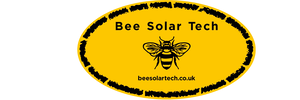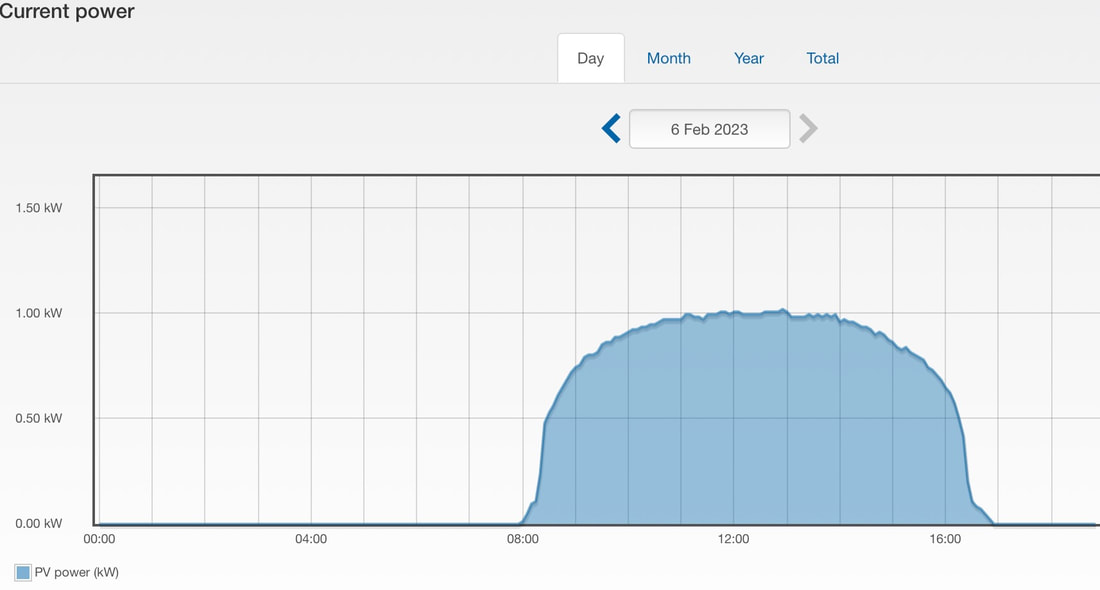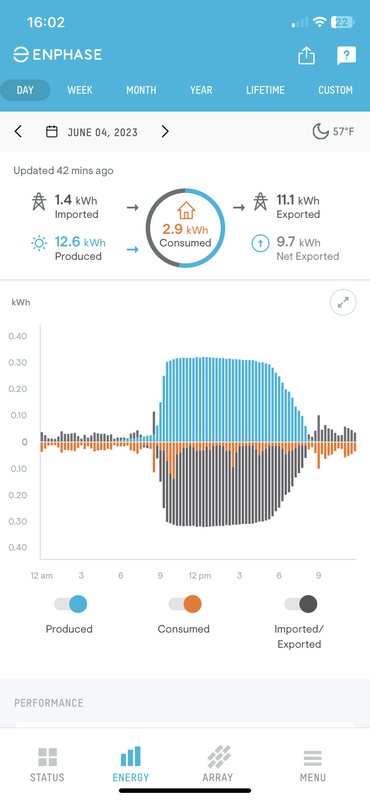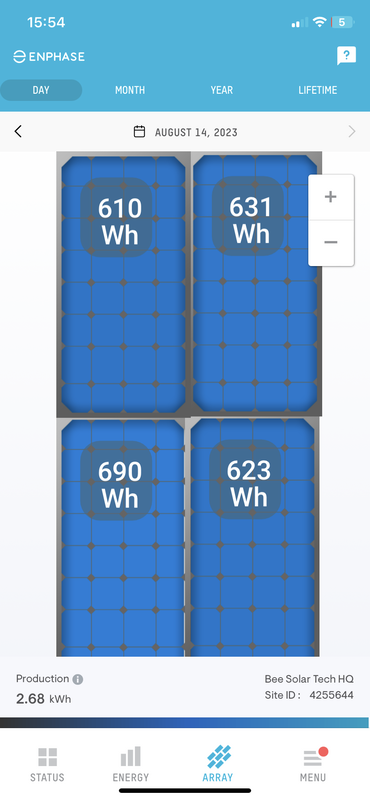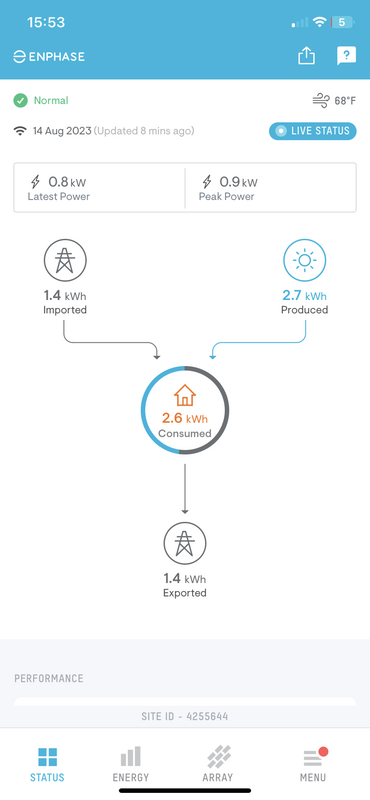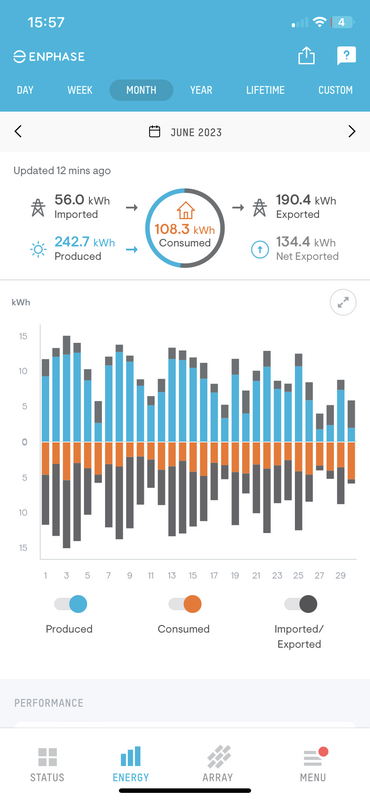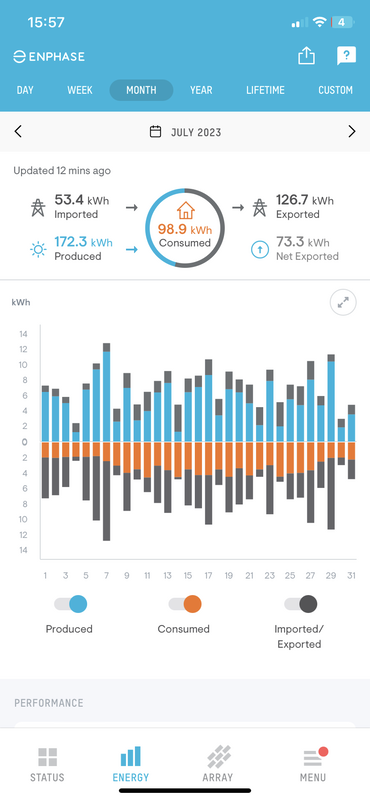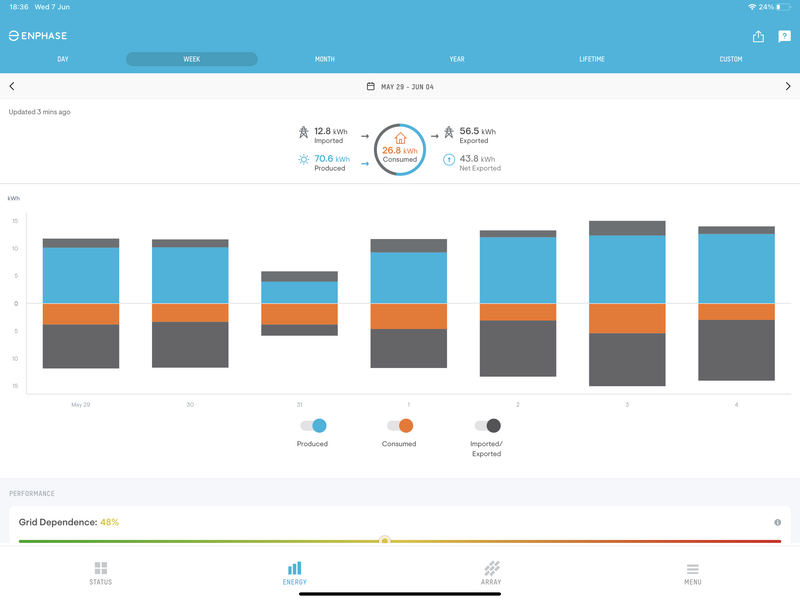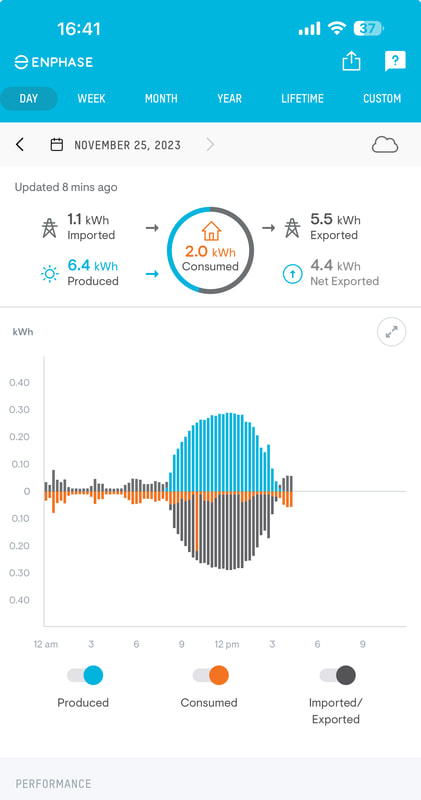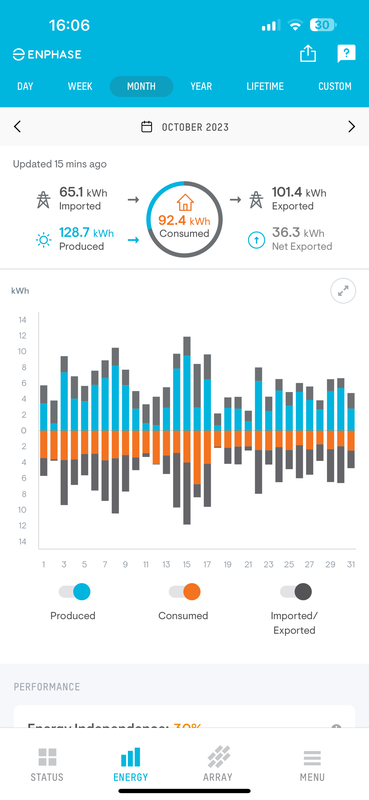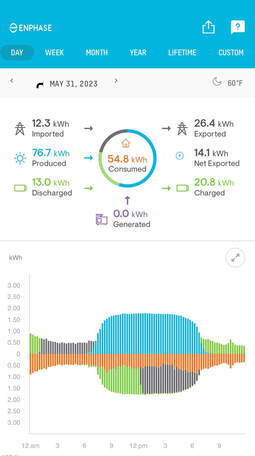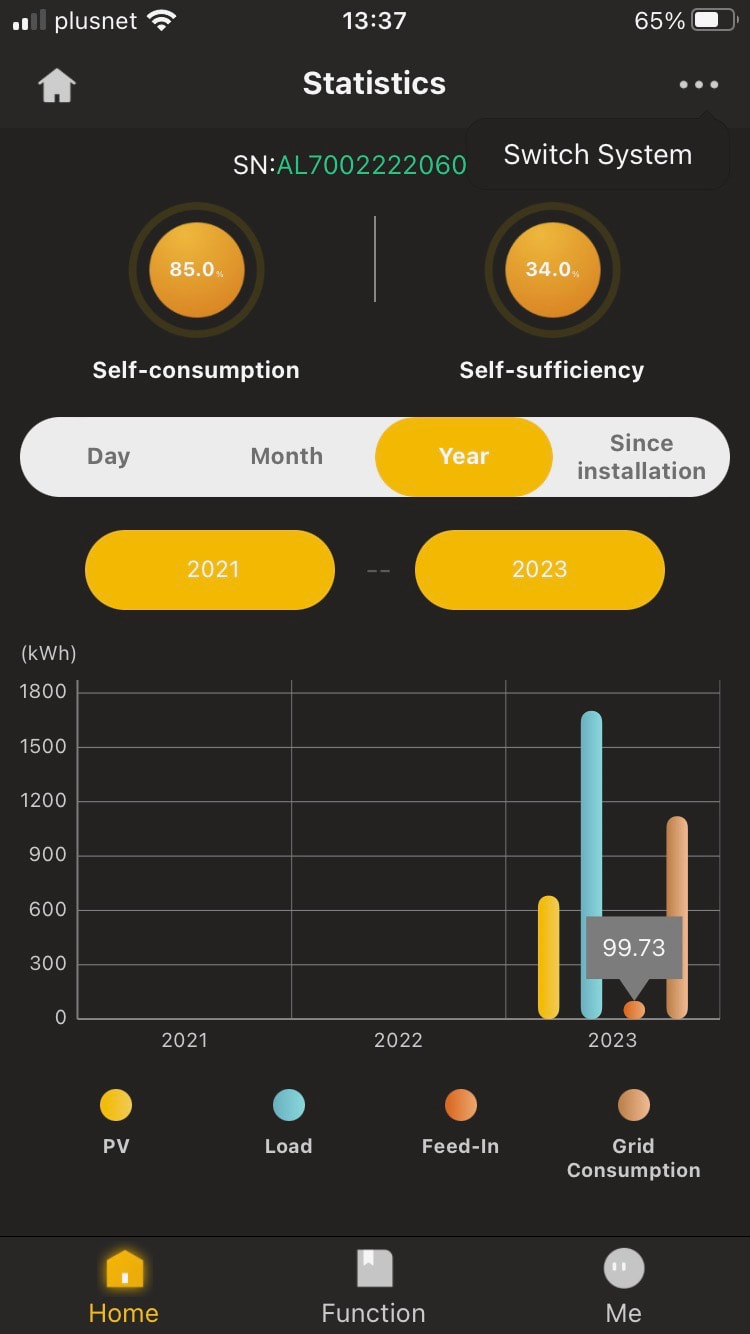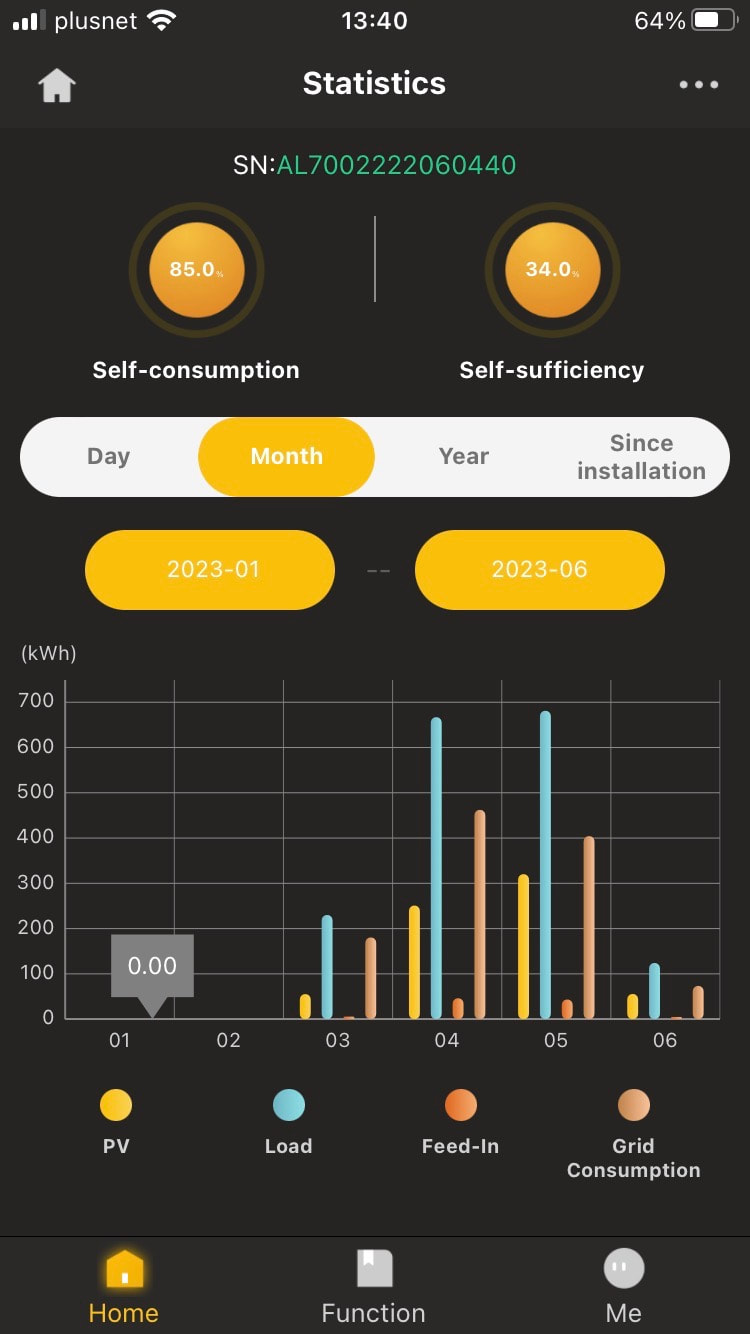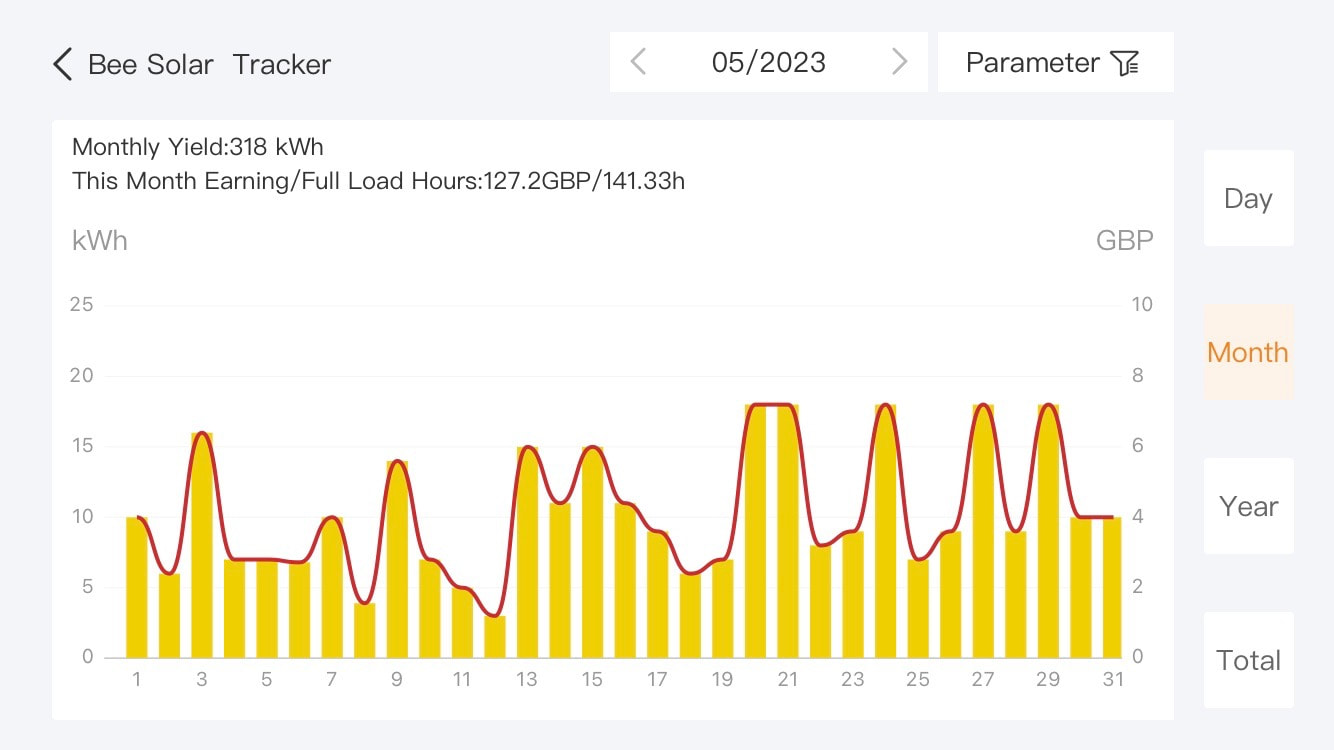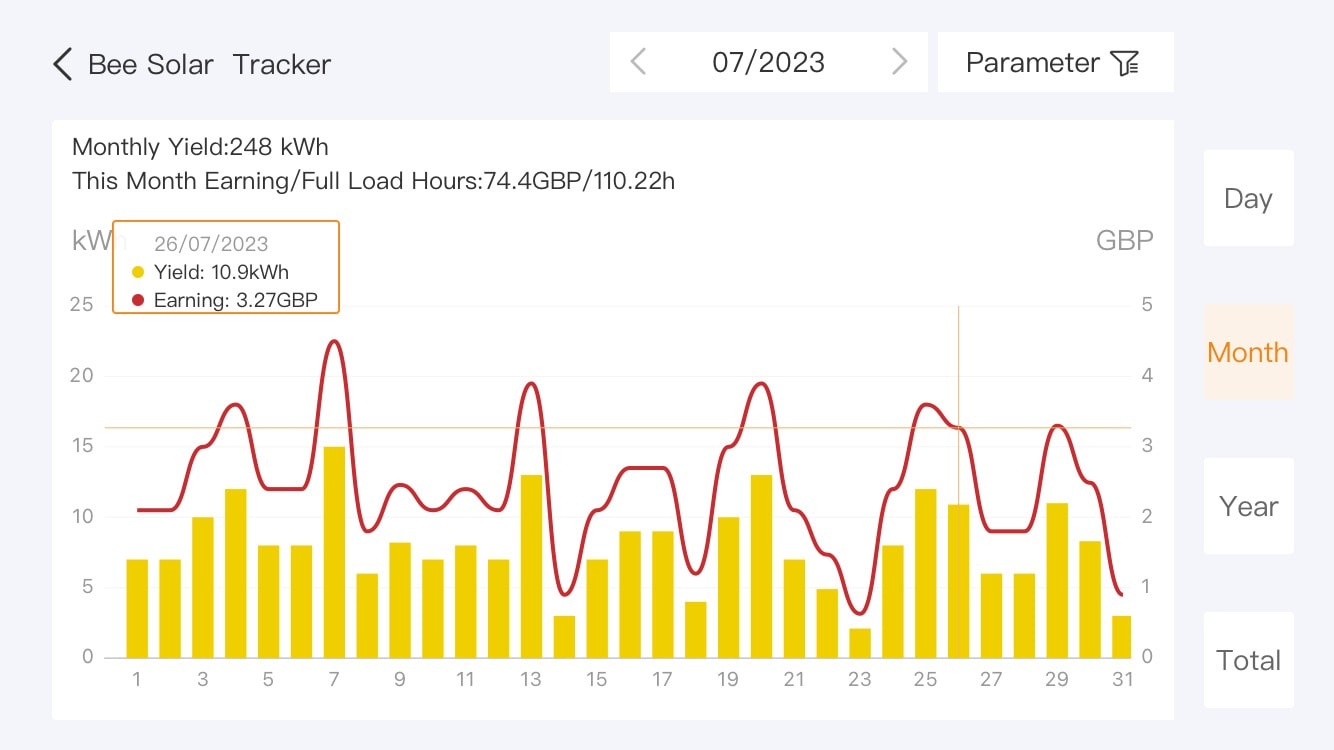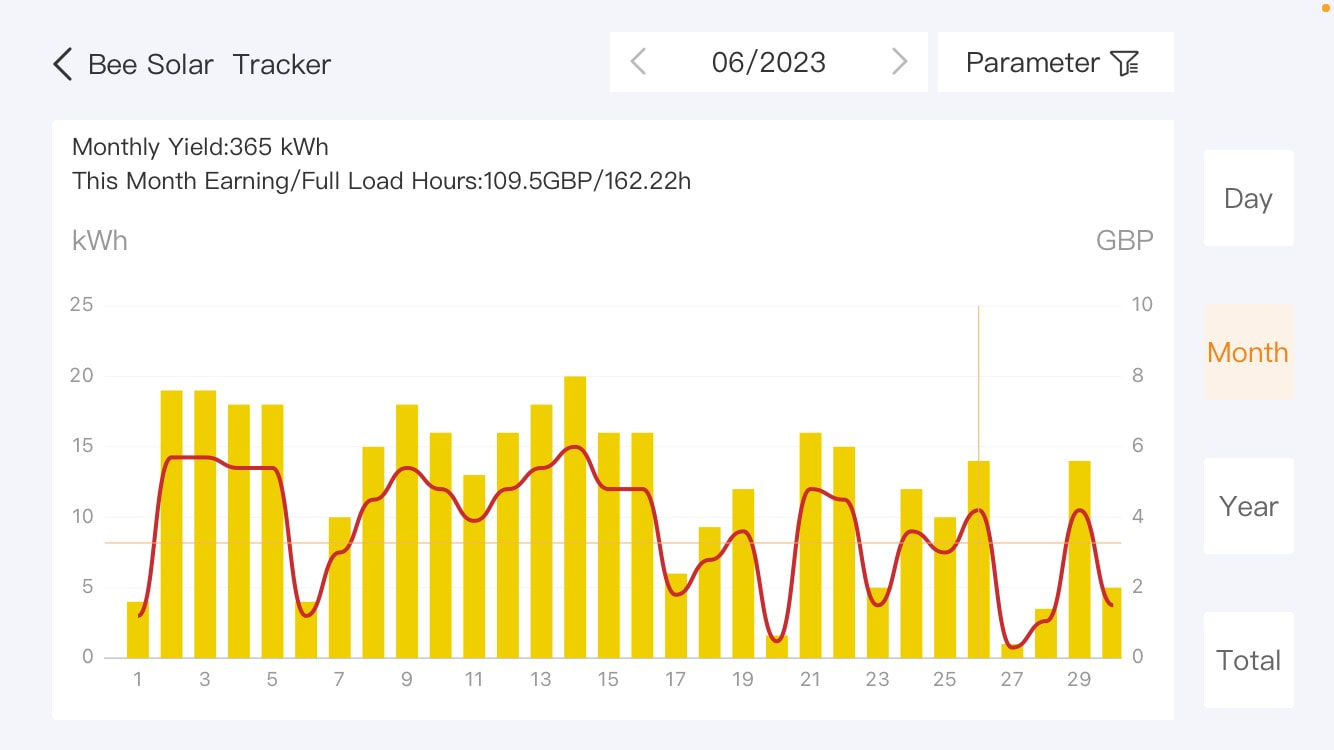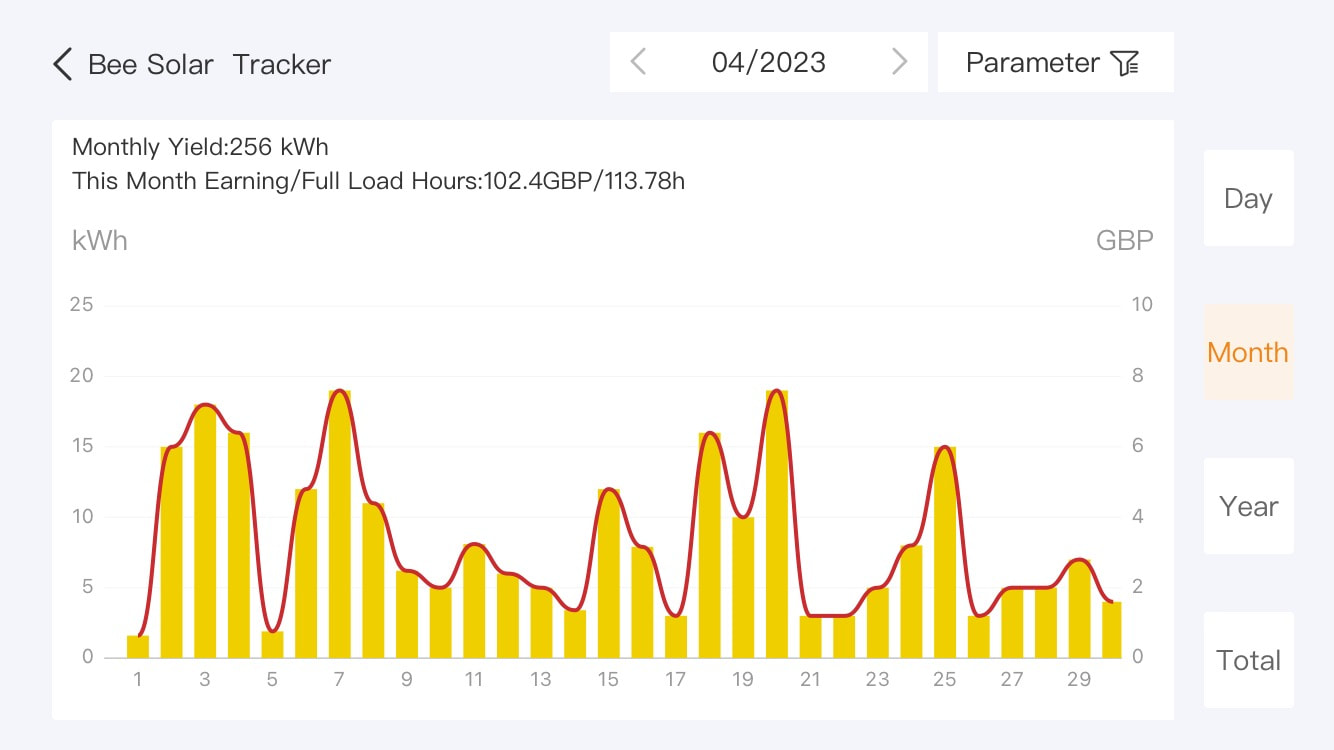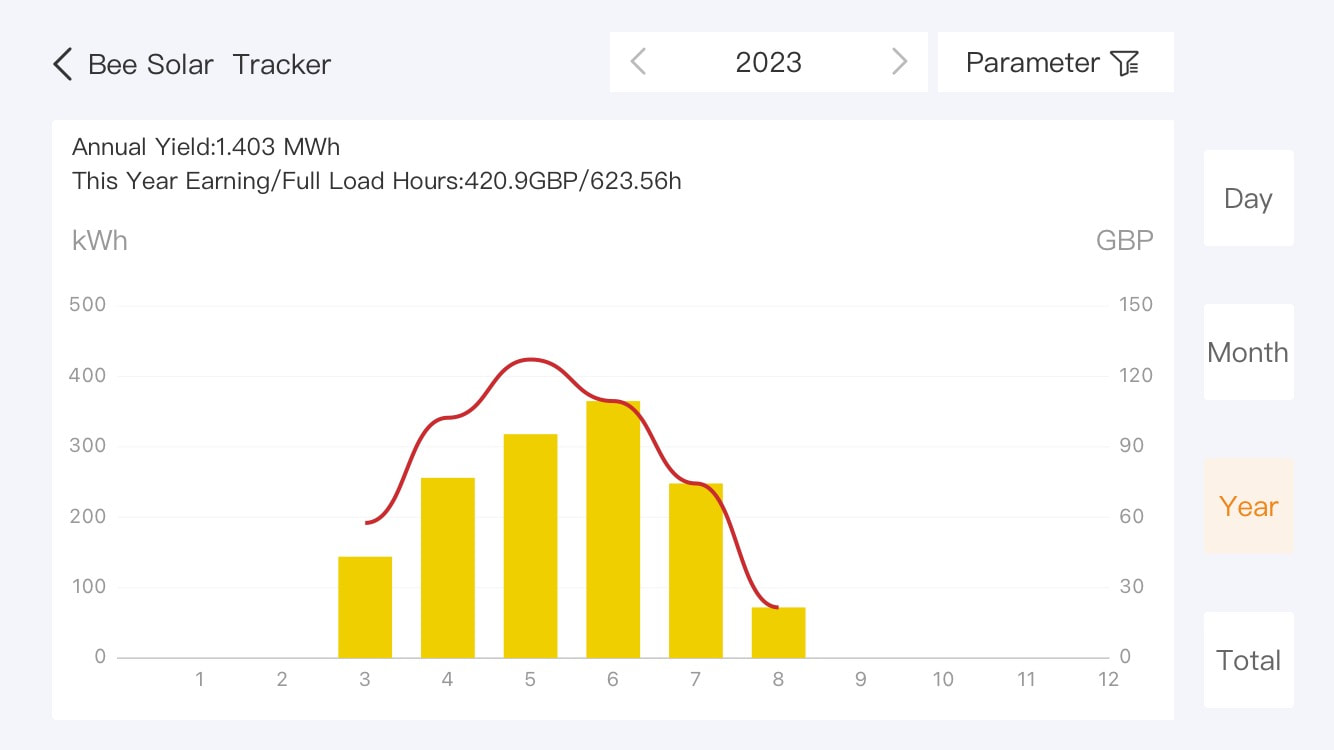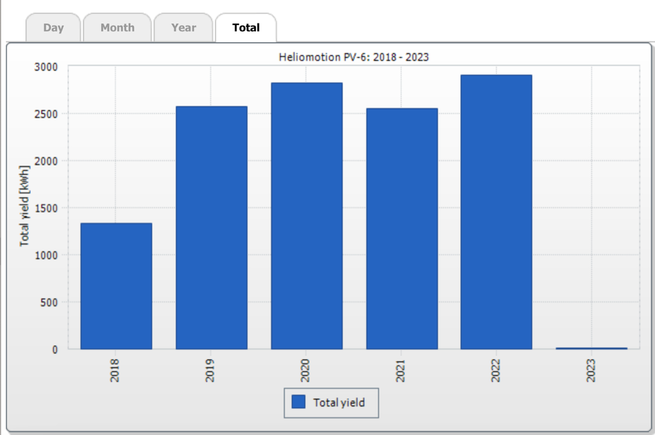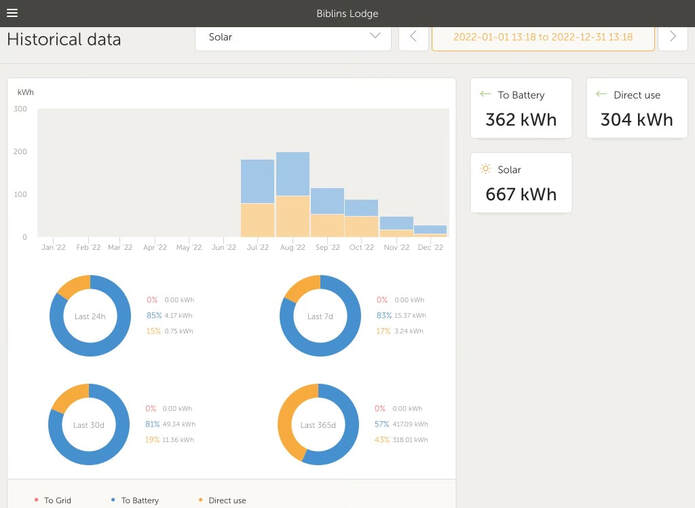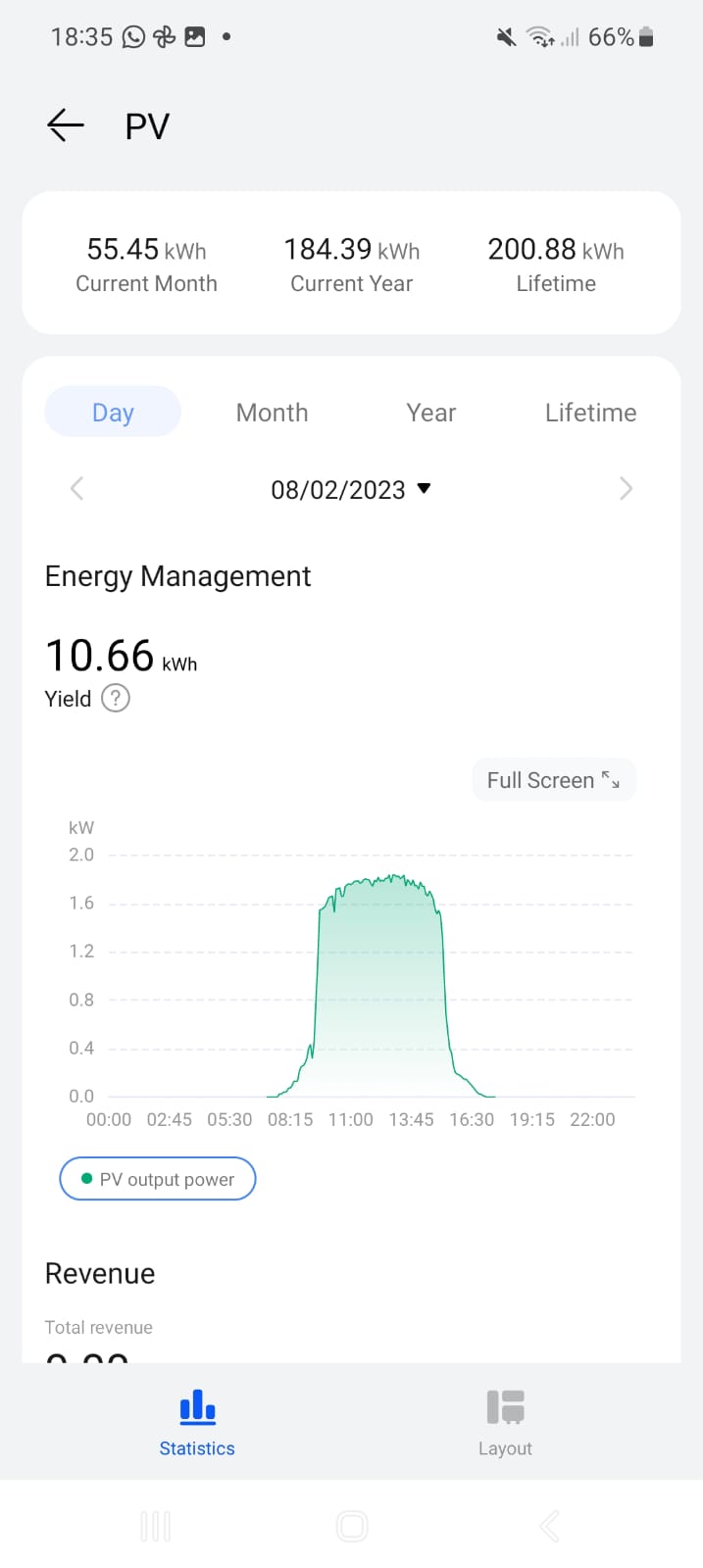How do Heliomotion solar trackers perform?
Our dual axis solar trackers turn and tilt all day so they optimally capture the sun's energy from sunrise to sunset. Below you can see a curve from a 5 year old PV-4 tracker, in February 2023, that demonstrates perfectly the difference compared with a static system which would resemble an upturned V. The lengthened hours of generation are the reason why we state that there is an uplift of between 30 and 60% depending on geographical location. In the UK, this is on average 40 - 45%. The trackers will reach their maximum turning angle of 180 degrees when the sun is far enough above the horizon for sufficient hours. In the UK that is likely to be from March - October. When the sun dips 6 degrees below the horizon they will commence their return track, completing it just before dawn in order to be in the right place for the next sunrise.
Solar panel temperature has a great bearing on performance. On the 4th September In Stroud, the air temperature was around 29º, but the panel temperature on the PV-4 was considerably hotter - probably nearer 40º. Solar panels perform best at temperatures between 20°C and 25°C. Every degree above 25º will lower panel performance by about .5%. If you have one of our tracking systems, because they are held in the air, rather than on a roof, fresh air/breeze cools the panels on a tracking system more efficiently than a roof based system where air is trapped underneath. In addition, a quick shower of cold water from your water butt or hose pipe will improve output. (A white substrate may help to generate the ideal temperature on your roof surface because you will have a lot of difficulty cooling them down with your hose, unlike our ground mounted systems!) Using Enphase Energy IQ7A/IQ8A micro-inverters allows you to monitor each individual panel via their Enlighten app.
Solar panel temperature has a great bearing on performance. On the 4th September In Stroud, the air temperature was around 29º, but the panel temperature on the PV-4 was considerably hotter - probably nearer 40º. Solar panels perform best at temperatures between 20°C and 25°C. Every degree above 25º will lower panel performance by about .5%. If you have one of our tracking systems, because they are held in the air, rather than on a roof, fresh air/breeze cools the panels on a tracking system more efficiently than a roof based system where air is trapped underneath. In addition, a quick shower of cold water from your water butt or hose pipe will improve output. (A white substrate may help to generate the ideal temperature on your roof surface because you will have a lot of difficulty cooling them down with your hose, unlike our ground mounted systems!) Using Enphase Energy IQ7A/IQ8A micro-inverters allows you to monitor each individual panel via their Enlighten app.
Average/guide annual figures for PV-4 and PV-6
Click on the images farther down to see screenshots of the real time outputs using the smartphone apps linked to various inverters - including kilowatt hours generated, consumed, exported and imported to/from the grid. They are all colour coded in different ways and you will need to open and look at the expanded images to read the various colour keys. It is normally possible to add a price per kilowatt hour so your system can tell you how many £/€/$ you are saving!
Below are output figures from a new PV-4 installed on 19th May, loaded with 400 watt panels and Enphase micro inverters. No way of using the surplus yet attached so a lot of electrons going back to the grid short term.
Left image of top 3 shows a virtually perfect tracking curve dated 4th June. Central image shows individual panel at a given time on a cloudy day. Right image shows current status. Image 4 June figures, were a lot better than our very wet July shown in image 5. Image 6 + output figures for a single week.
Below are output figures from a new PV-4 installed on 19th May, loaded with 400 watt panels and Enphase micro inverters. No way of using the surplus yet attached so a lot of electrons going back to the grid short term.
Left image of top 3 shows a virtually perfect tracking curve dated 4th June. Central image shows individual panel at a given time on a cloudy day. Right image shows current status. Image 4 June figures, were a lot better than our very wet July shown in image 5. Image 6 + output figures for a single week.
The three lower images, 7, 8 and 9 are a perfect solar day in late November, the 25th, the output from 1st to 27th November and a graph showing the system over 7 months, starting 19th May to end November.
Below is a perfect curve from our four systems in Virginia, USA, dated 31st May 2023. Recently it has been over 40 degrees C - too hot for solar to perform at maximum output, and they have had to contend with a lot of smoke from the wild fires blowing all the way from Canada. Their owner is looking forward to the cooler but bright days of Autumn. He has 33 kWh of battery installed.
Below is a perfect curve from our four systems in Virginia, USA, dated 31st May 2023. Recently it has been over 40 degrees C - too hot for solar to perform at maximum output, and they have had to contend with a lot of smoke from the wild fires blowing all the way from Canada. Their owner is looking forward to the cooler but bright days of Autumn. He has 33 kWh of battery installed.
These are the recent figures from a new PV-6 installed earlier in 2023 and linked to battery storage.
These are the figures for the last few years from a PV-6 with 330 watt panels installed mid 2018.
Second half 2022 figures for a PV-4 with 360 watt panels installed in July. They have a Victron battery system. Yellow figures are direct use, blue is power stored in the battery. Nothing goes back to the grid.
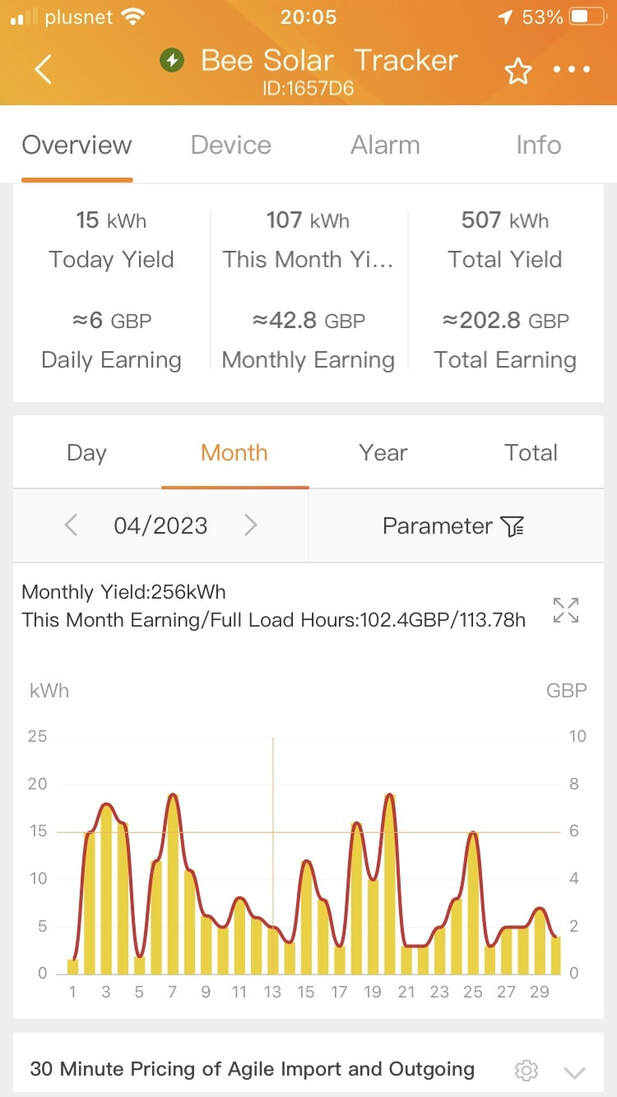
April figures for a new PV-6 tracker installed in 2023 in Yorkshire. The customer is very happy with power generated already.
This PV-6, with 6 x 380 watt Meyer Burger all black panels, was installed on 16th December 2022. The surplus is diverted to an iBoost and is heating their hot water, minimising their use of their fossil fuel boiler.
